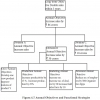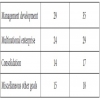Home | ARTS | Strategic Management
|
Decision-Making Hierarchy Of Business Firms - Strategic Business Unit and Functional Level Strategies
Strategic Management - Concept Of Corporate Strategy
Decision-Making Hierarchy Of Business Firms - Strategic Business Unit and Functional Level Strategies
Posted On :

The decision-making hierarchy of business firms typically con-tains three levels as shown in Figure 4.2
Decision-Making Hierarchy
Of Business Firms
The decision-making hierarchy of business firms typically con-tains three levels as shown in Figure 4.2 At the top is the corporate level, composed principally of members of the board of directors and the chief executive and administrative officers. They are responsible for the fi-nancial performance of the corporation as a whole and for achieving the
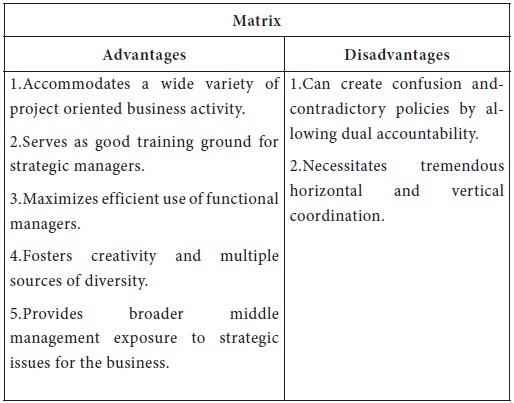
The second rung of the decision-making hierarchy is
the business level composed principally of business and corporate mangers.
These managers must translate the general statements of directions and intent
generated at the corporate level into concrete, functional objectives and
strategies for individual business divisions or SBUs. In essence, business-level
strategic mangers must determine the basis on which a company can compete in
the selected product-market arena.
The third rung is the functional level, composed principally of managers of product, geographic, and functional areas . It is their responsibility to develop annual objectives and short-term strategies in such areas as production, operations, and research and development; finance and accounting, marketing: and human relations. However, their greatest responsibilities are in the implementation or execution of a company’s strategic plans. While corporate and business-level managers centre their planning concerns on “doing the right things,” managers at the functional level must stress “doing things right.” Thus, they directly address such issues as the efficiency and effectiveness of production and marketing systems, the quality and extent of customer service, and the
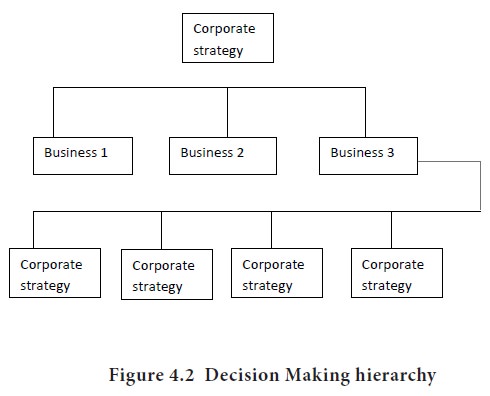
Table 4-1 depicts the characteristics of strategic
manage-ment decisions at different levels. Examples of corporate-level
decisions include the choice of business, dividend policies, sources of
long-term financing, and properties for growth. Functional-level decisions
usu-ally determine actions requiring minimal company wide cooperation. These
activities supplement the functional area’s present activities and a re
adaptable to ongoing activities so that minimal cooperation is needed for
successful implementation. Business –level descriptions of strategic decisions
fall between those for the other two levels. For example, busi-ness-level
decisions are less costly, risky, and potentially profitable than corporate
level decisions, but they are more costly, risky, and potentially profitable
than functional-level decisions. Some common business-level decisions involve
plant location marketing segmentation and geographic coverage, and distribution
channels.
Table 4-1
Characteristics of strategic management decisions at different levels
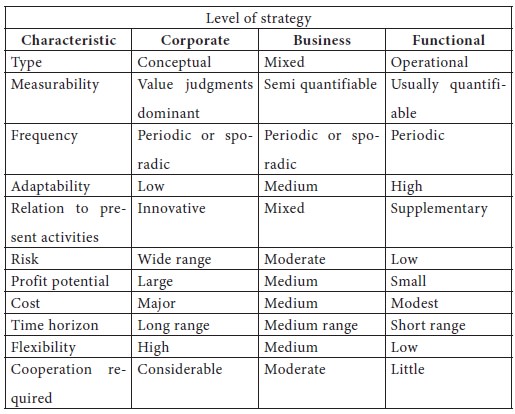
The decision-making hierarchy of business firms typically con-tains three levels as shown in Figure 4.2 At the top is the corporate level, composed principally of members of the board of directors and the chief executive and administrative officers. They are responsible for the fi-nancial performance of the corporation as a whole and for achieving the

The third rung is the functional level, composed principally of managers of product, geographic, and functional areas . It is their responsibility to develop annual objectives and short-term strategies in such areas as production, operations, and research and development; finance and accounting, marketing: and human relations. However, their greatest responsibilities are in the implementation or execution of a company’s strategic plans. While corporate and business-level managers centre their planning concerns on “doing the right things,” managers at the functional level must stress “doing things right.” Thus, they directly address such issues as the efficiency and effectiveness of production and marketing systems, the quality and extent of customer service, and the


Tags : Strategic Management - Concept Of Corporate Strategy
Last 30 days 1665 views












